Band Weaving Class Focuses on Sami Designs
The winter daylight at the end of February was just right for a repetition of a popular class at ASI.
-
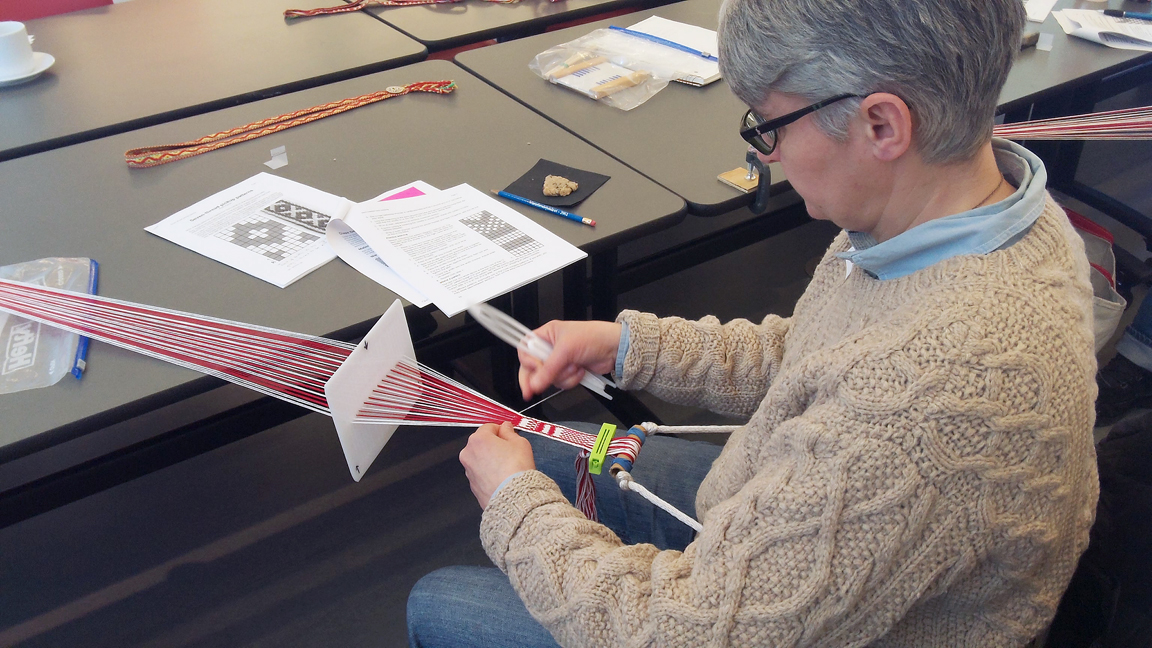 Participants in the Sami-inspired band weaving course, held at the American Swedish Institute in collaboration with the Weavers Guild of Minnesota, worked on acrylic looms from Sweden. Photo by V. S. Arrowsmith
Participants in the Sami-inspired band weaving course, held at the American Swedish Institute in collaboration with the Weavers Guild of Minnesota, worked on acrylic looms from Sweden. Photo by V. S. Arrowsmith -
-
Sami inspired band weaving was such a popular course offering this winter at the American Swedish Institute (ASI), in collaboration with the Weavers Guild of Minnesota, that it was offered twice. The first class in January sold out, and people on the waiting list were fortunate that planners agreed to provide a second opportunity for a weaving weekend a month later.
-
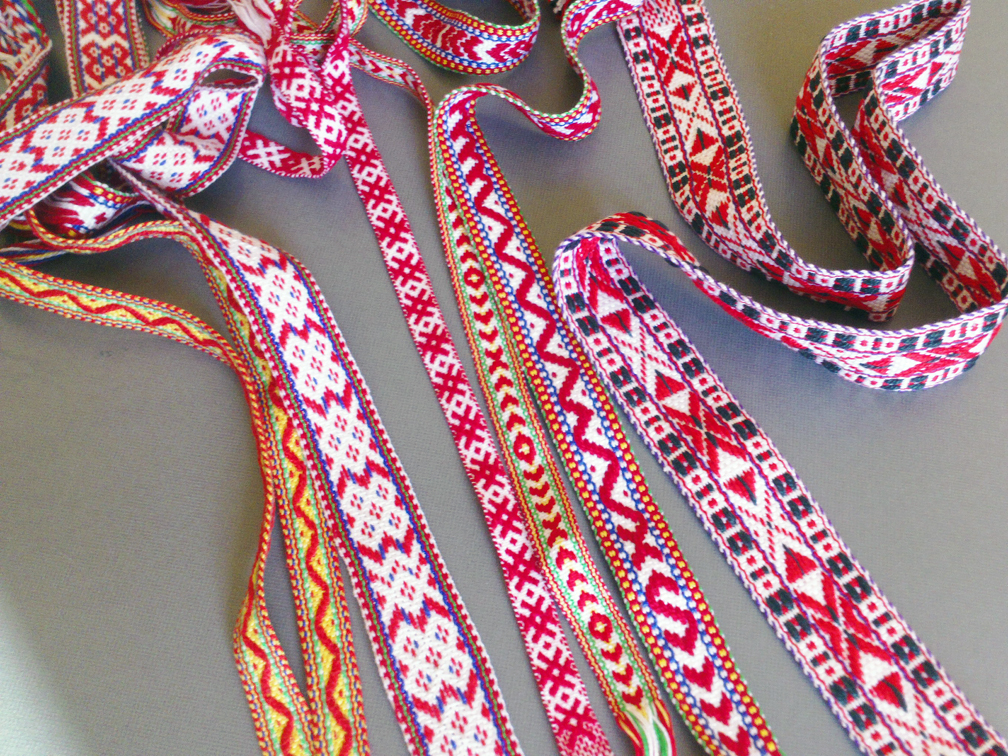 A variety of samples were available for inspiration from instructor Keith Pierce. Photo by V. S. Arrowsmith
A variety of samples were available for inspiration from instructor Keith Pierce. Photo by V. S. Arrowsmith -
-
The winter daylight at the end of February was just right for finding colored pattern threads sleyed through small slots in rigid heddle looms from Sweden. The instructor supplied everyone with equipment to get started, and looms were already set up and ready to go, so learners could begin weaving immediately after introductions and instruction. The idea was to learn pick-up techniques to bring pattern threads to the surface of a basket-weave ground and create a woven band about one inch wide and a couple feet long. A small netting shuttle assisted novice hands in the process of seeking and selecting the correct warp ends. The final products were suitable for bookmarks, a strap for a cloth bag, trim for a garment or just a sampler of pattern designs.
-
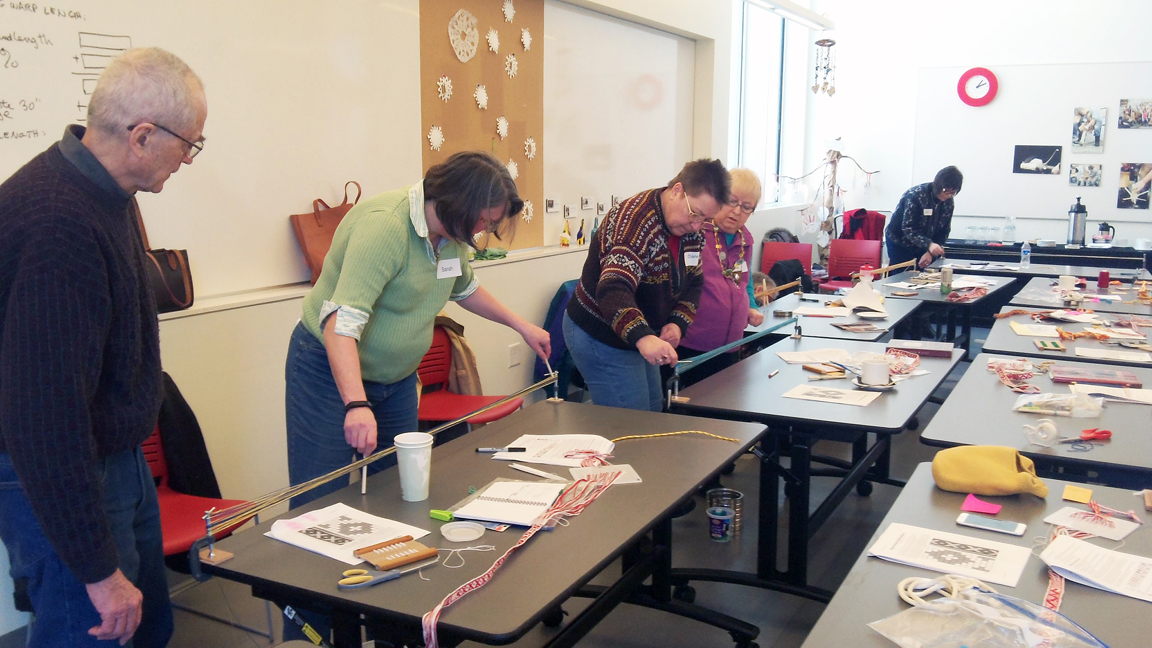 On day two of the Sami-inspired band weaving workshop, participants learned how to warp a small adapted rigid heddle loom. Photo by V. S. Arrowsmith
On day two of the Sami-inspired band weaving workshop, participants learned how to warp a small adapted rigid heddle loom. Photo by V. S. Arrowsmith -
Participants came to class for a number of reasons. They had family members who were enthusiastic weavers; they were preparing for retirement; they had already sampled other textile crafts in the Nordic tradition such as Hardanger embroidery; some were knitters; some had tried inkle loom weaving; and some were teachers looking to add a new type of weaving to their repertoires. One admitted to be a Nordic wanna-be with no Scandinavian heritage, but earned a place at the table through a textile affiliation.
-
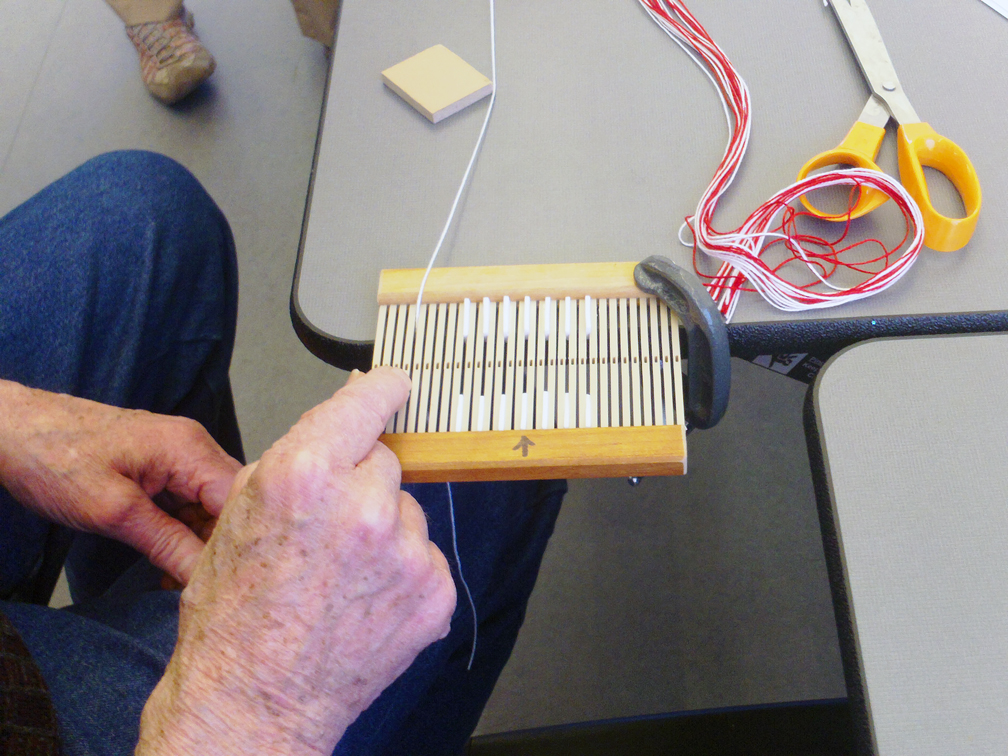 Rigid heddles were cut into five-inch sections and then adapted by inserting pieces of foam sheeting into some of the slots to create shorter slots for the pattern threads. Instructor Keith Pierce begins to show how to sley the reed to get the loom ready for weaving. Photo by V. S. Arrowsmith
Rigid heddles were cut into five-inch sections and then adapted by inserting pieces of foam sheeting into some of the slots to create shorter slots for the pattern threads. Instructor Keith Pierce begins to show how to sley the reed to get the loom ready for weaving. Photo by V. S. Arrowsmith -
Instructor Keith Pierce is a regular teacher at the Minnesota Weaver’s Guild in Minneapolis. He belongs to a study group called “Banditos,” which meets monthly to exchange knowledge and ideas about band weaving. He began his weaving journey some decades ago, then returned to it in later years and now focuses on inkle weaving, rigid heddle pick-up weaving and card or tablet weaving. Besides his textile experience he offered other resources in the form of books about Baltic and Sami band weaving, some handouts giving definitions and detailing processes, and he had the additional support of Jane, a colleague from the Weaver’s Guild, who assisted students in their hands-on learning. Each person nearly completed one woven band, learned how to warp the loom for future projects and took home the equipment needed to continue with this endeavor.
-
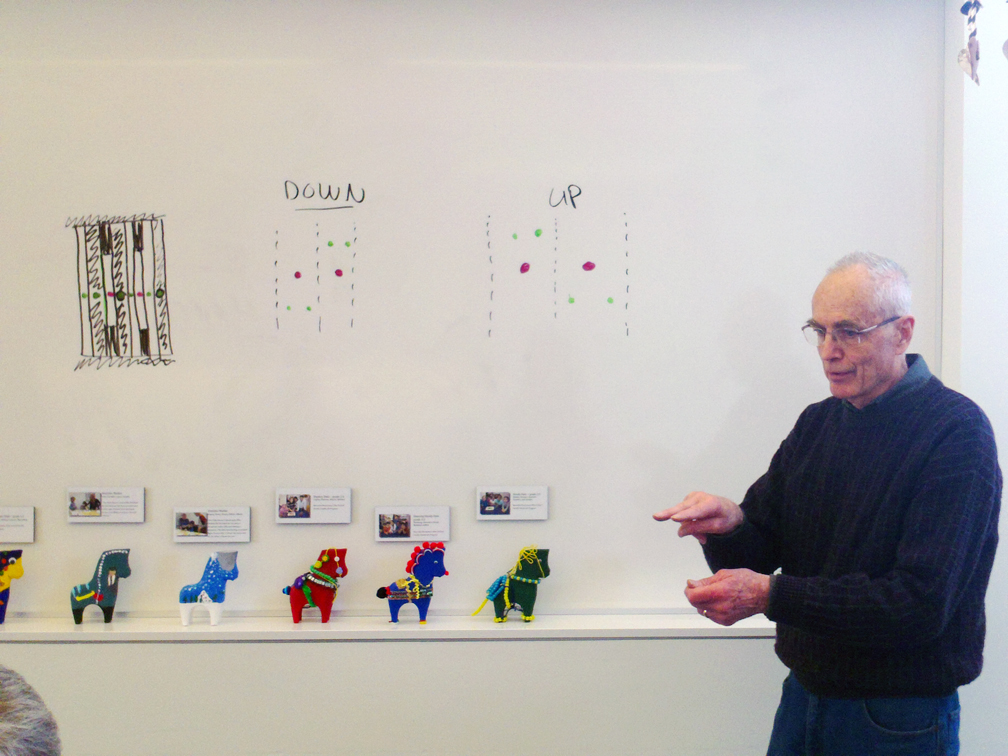 Band weaving instructor Keith Pierce, a regular teacher at the Weavers Guild of Minnesota, drew a diagram to show how one could create a pattern for the pick-up technique in Sami–inspired band weaving. A row of Dala horses, not the intended audience, seems to be standing at perfect attention, listening to his description. Photo by V. S. Arrowsmith
Band weaving instructor Keith Pierce, a regular teacher at the Weavers Guild of Minnesota, drew a diagram to show how one could create a pattern for the pick-up technique in Sami–inspired band weaving. A row of Dala horses, not the intended audience, seems to be standing at perfect attention, listening to his description. Photo by V. S. Arrowsmith -
Robust Swedish coffee and cookies capped the experience in the ASI slöjd room, a good work space flooded with natural light. At the end of the two-day class, participants were invited to view the current ASI exhibits featuring fashions inspired by the Nobel prizes.
-
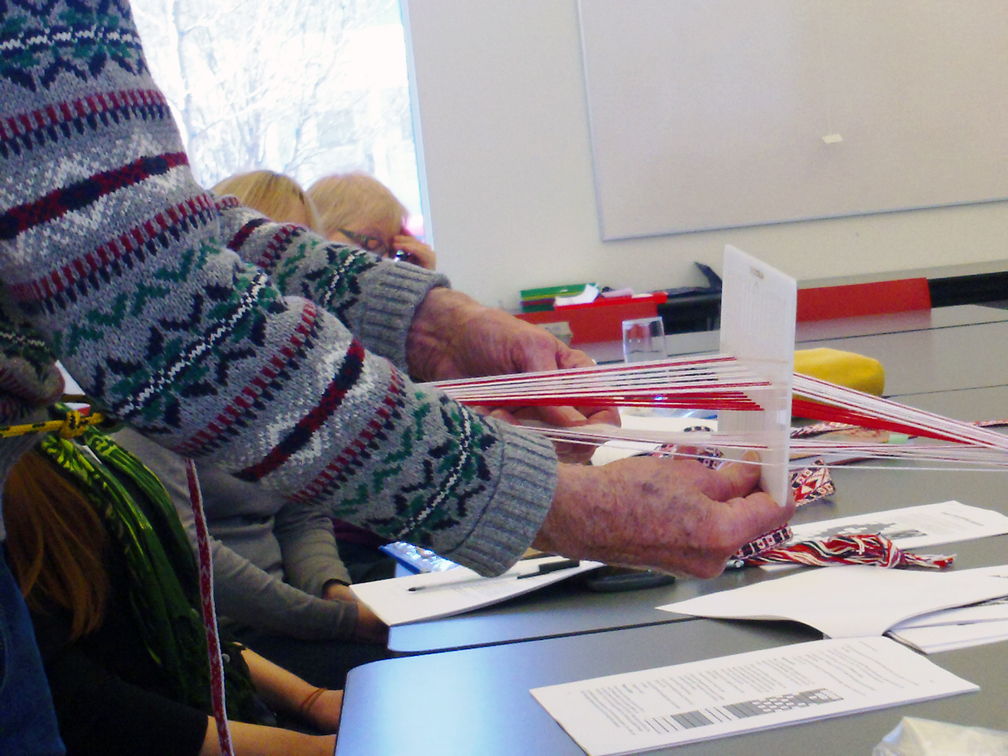 This band weaving loom from Sweden has a set of red pattern threads nestled in the middle of the ground warp-ends, mostly in white. A netting shuttle is used to select which of the red threads will be brought to the surface to create a geometric design. Photo by V. S. Arrowsmith
This band weaving loom from Sweden has a set of red pattern threads nestled in the middle of the ground warp-ends, mostly in white. A netting shuttle is used to select which of the red threads will be brought to the surface to create a geometric design. Photo by V. S. Arrowsmith -
For more information about the ASI and the Minnesota Weaver’s Guild, visit www.asimn.org and www.weaversguildmn.org.
-
-
